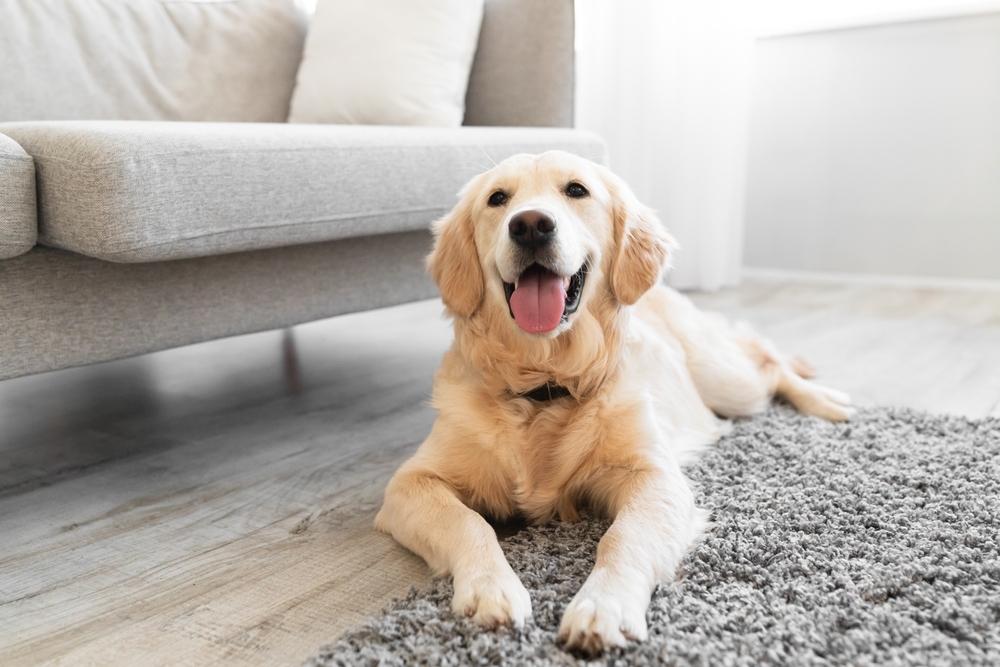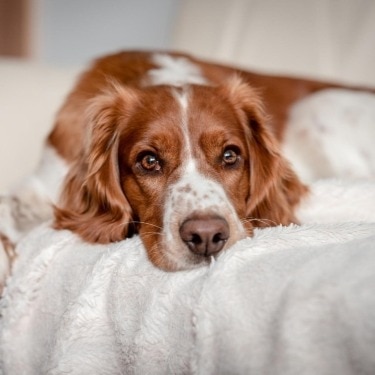

It's normal for dogs to get upset when their parent leaves — after all, you're their family, playmate, and safe space. But there's a difference between disappointment and dog separation anxiety. If you're concerned your pup may be suffering from the latter, understanding what they're going through and how you can help them is a great start to providing them the support and comfort they need, even when you're not home.
Here's what you should know about recognizing separation anxiety in dogs and how you can help them feel more secure on their own.
What Is Dog Separation Anxiety?
Dog separation anxiety is a condition in which a dog becomes extremely distressed due to being separated from their chosen person. It goes beyond simply whining when you leave; separation anxiety often manifests through property destruction or self-harming behavior. Not only is this upsetting for your dog, but it can also be challenging for you as the parent, often making it stressful to leave the home for any amount of time.
Although it remains a mystery as to what makes certain dogs more prone to separation anxiety, some triggers include:
Over-attachment to their pet parent due to how they were raised as a puppy
Underlying emotional predispositions, such as fear and nervousness
Having been rehomed or spent time in a shelter or kennel
Sudden change in household routine or structure, such as the loss of a family member or other pet
Research in this area is still ongoing, but estimates indicate that anywhere between 29-50% of dogs may show signs of separation anxiety. While it can be hard to see your dog so distressed, it is a common issue that many dog parents face.
What Are the Signs of Dog Separation Anxiety?
In cases of separation anxiety, destructiveness is usually directly related to the desire to escape. Chewing your favorite pair of shoes while you're gone is likely just them being a dog, but if they chew and scratch the walls, they may very well be desperate to get out — a telltale sign of separation anxiety in dogs. In dogs facing this problem, these behaviors will only show up when they're left alone. If they act the same way whether you're home or not, then there's likely another underlying cause.
Common signs of separation anxiety in dogs include:
Following you closely, especially as you are preparing to leave
Soiling in the house when you're gone (sometimes eating it)
Tearing up their surroundings
Injuring themselves trying to escape
Excessive vocalizing
Pacing
Refusing to eat or drink
Incessant panting or salivating
Some factors, including a medical condition, age or personality can make dogs more prone to experiencing separation anxiety. Puppies, especially those adopted at a very young age, can also struggle with separation anxiety.
If your dog begins showing new behaviors that are not typical for them (especially if you are away more often than in the past), it's worth checking in with your veterinarian to receive an accurate diagnosis. Some signs can indicate other medical conditions, and your vet will be able to help you pinpoint the specific cause.

How to Help a Dog With Separation Anxiety
Perhaps you want to learn how to stop your dog from whining when left alone or address destructive behaviors. Fortunately, there are steps you can take to train them to become more comfortable on their own. It will take time, but these strategies can help minimize or eliminate separation anxiety behaviors.
Dog Separation Anxiety Training
If your dog is already suffering from mild to moderate behavior issues, separation anxiety training can help. Supporting your pup starts with helping them overcome their fear by giving them gradual practice at being on their own. Here are some examples:
Offer your dog a puzzle toy filled with their favorite treat — one that they get only when you're gone. This can help associate your absence with a positive reward.
Dogs can anticipate when you plan to leave by observing your behavior. For instance, your dog might recognize that you always grab your keys or put on your coat, and these signals can trigger their anxiety. Try performing these habits without leaving. This can help eliminate the association and teach your dog there's no reason to fear. Once they're used to the habit, try practicing the habit, leaving, and then immediately returning. Repeat this multiple times, gradually increasing the amount of time you're outside before coming back.
If possible, have other family members help care for your dog to reduce over-attachment issues.
Planning to board them at a kennel for a few days while you're out of town? Ease into it ahead of time by taking them there to visit, and leave a favorite toy or an old T-shirt of yours to comfort them during their stay. If a friend or family member is caring for them at home, introduce your dog to the house sitter well in advance.
Exercise and Mental Stimulation
Since dogs typically exhibit signs of anxiety within the first 10-15 minutes of your absence, it can help to provide engaging distractions. Here are some ways to keep your dog happy and reduce the likelihood of them being destructive:
Vigorous exercise, daily walks and interactive play can all go a long way toward keeping their confidence once you leave.
Providing mentally stimulating toys, such as puzzle toys or motion-activated dog toys, gives them something to keep their mind occupied during your absence.
Play music for your dog. Slow tempos of classical music or even harp music can have a calming effect.
Of course, showering your dog with love and attention when you're with them will remind them they can depend on you no matter where you are.

Professional Support
If you suspect your dog has separation anxiety, and especially if they become injured or cause severe damage, talking to your vet about your concerns is the best course of action. Dogs suffering from extreme fear and anxiety need support, and your vet may prescribe anti-anxiety medications to help them stay calm while you practice healthier reactions. An experienced dog trainer or animal behaviorist may also be able to help you create a personalized plan for your pet.
The Journey to a Calmer, Happier Pup
With a proper diagnosis, a strategic action plan can offer relief for your dog and your household. Puppy and dog separation anxiety is challenging for everyone involved, but supporting them and giving them the confidence to be alone can make a big difference. Patience and consistency are the key to helping them feel safe and deepening your bond as a family.

























